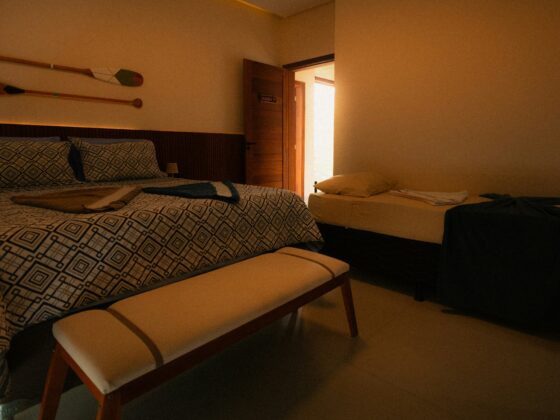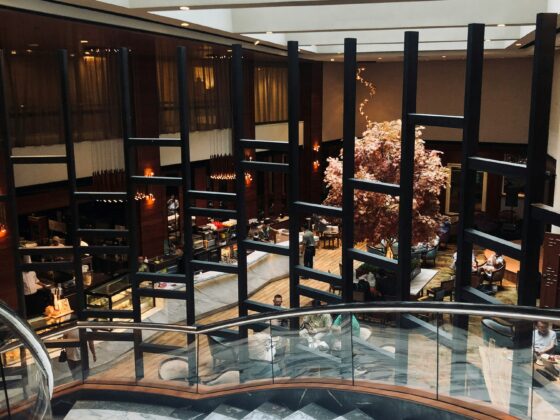
Through thermal destratification, hotels can make significant environmental changes, the standout being the reduction in energy consumption. Thermal destratification can be a crucial source of support in helping HVAC systems maintain desired temperatures, allowing for the reduction in blower speed to achieve full saturation of HVAC air to all corners of the room, ultimately resulting in more cost-friendly energy bills. Thermal destratification can also reduce the temperature difference between the roof and the outside, which can decrease the amount of heat lost through the roof.
With the opportunities that thermal destratification presents to hotels, investment in the latest cooling technologies should be a complete no-brainer.
Guests as the Lifeblood of a Hotel
There’s nothing worse than struggling through the cramped space of a tight flight, only to eventually enter a hotel room that is either freezing or oppressive with heat. Out the window goes the hope for a comfortable stay!
This dichotomy between the two cases causes the guest to set the room HVAC temperature to a point of continuous operation. Now imagine this across blocks of rooms on multiple floors… the energy consumption is gravely alarming. With this, the critical question is how hotel operators will provide their guests with in-room comfort – an understandable expectation – that will ideally make enough of an impact to serve as a factor in a repeat stay (even word of mouth referrals).
This is when thermal destratification makes its mark. In the case of an exceptionally cold room, floor to ceiling and wall to wall, that frigid air that primarily hovers on the floor is distributed evenly throughout the room. This process is to be inverted when hot air needs to be distributed by removing it from the ceiling area.
Advancements Paving the Way
To keep hotels (as well as other structures) moving towards a reduction in energy consumption, efforts towards cooling advancements must be a strong focus. As such, various advancements are already being seen and making a significant contribution:
- Through distinct improvements in compressor technology, energy reduction has been reduced.
- Coolant gas, previously quite harmful, is now safer.
- Set temperatures in hotels can be increased and blower speed can be decreased.
- A simple program that allows the optimum reduction of the costliest elements of HVAC systems can be addressed directly.
All these advancements can provide better efficiencies, but it’s important to note that the cost of older unit replacement will most likely occur. However, despite this need, the adoption and implementation of breakthrough cooling technologies allow hotels to tout their reduction in energy consumption (a significant win considering the current state of the hospitality industry and its issues with sustainability) as well as their success in improving the overall guest experience and comfort.
A Win-win for All
With hotels’ increasing commitment to energy efficiency seemingly on the rise, there is hope that we will witness a significant impact on the state of the environment, with innovative cooling technologies as the way of the future. A large-scale renovation, inconvenient and often quite costly, is no longer an issue. As indicated by an independent study
performed by Purdue University, the benefits of energy reduction and improved guest comfort are clearly defined – the best of both worlds. Watch thermal destratification and how its use in more novel cooling approaches is transforming the landscape of hotel operations and how they should invest budget in the future – especially with energy savings costs and guest comfort in mind.








